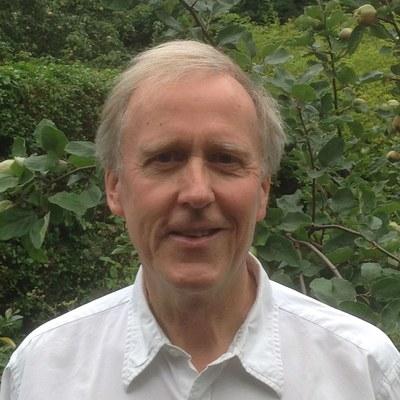In 1990, together with Dr Jamie Davies and Dr Geoffrey Cook, we identified nerve growth-repulsion as a critical mechanism underlying vertebrate neural development. We published back-to-back with colleagues from the USA and Germany using different anatomical systems. Together these provided strong evidence for the importance of growth repulsion, alongside growth promotion, in building the nervous system (Davies et al, 1990).
The system we study concerns the ladder-like 'segmented' repeat pattern of the peripheral spinal nerves in birds and mammals. This develops when outgrowing motor and sensory nerve endings (growth cones) leave the spinal cord and contact the surface of adjacent somite cells (future vertebrae). When growth cones contact each successive posterior/caudal half-somite they undergo abrupt cytoskeletal collapse and repulsion, forcing nerve growth exclusively through each growth-permissive anterior/cranial half-somite. This nerve-gating system ensures the anatomical separation of the spinal nerves and vertebral bones, allowing nerves to reach and innervate their body targets via the familiar repeat pattern of the spinal nerves (Keynes & Stern, 1984).
We recently identified the nerve repellent and its molecular mechanism, following a lengthy biochemical purification from microdissected chick embryo somites, combined with a growth cone collapse assay to monitor repulsion. Repulsion results from an O-glycosylated form of the foldase enzyme 'protein disulphide isomerase' (PDI-A1/P4HB). PDI is expressed at the surface of posterior but not anterior cells in each somite, and its activity causes local release of growth-repellent nitric oxide/NO. It is also expressed by brain cells (astrocytes) in mammalian brain grey matter. Here we hypothesize it acts constitutively as an anti-growth regulator of synaptic connectivity/plasticity, opposing and stabilizing the growth-promoting activity of growth factors such as the neurotrophins (Cook et al, 2020).
To assess a possible role for this system in neurodegenerative disease we are collaborating with Dr Andrew Larner (former graduate student with Keynes, retired Consultant Neurologist and Honorary Senior Research Fellow, Brain Repair & Rehabilitation, University College London). We have compared expression of grey matter repulsive activity in post-mortem samples of normal human cerebral cortex with those of neurodegenerative disease obtained from the Cambridge Brain Bank. We are also collaborating with colleagues in Norway - Dr Axel Sandvig, former graduate student with Keynes, and Dr Ioanna Sandvig, at the Norwegian University of Science and Technology, University of Trondheim, Norway - to investigate the system further using in vitro models of nerve growth and connectivity.
Selected Publications
Cook GMW, Sousa C, Schaeffer J, Wiles K, Jareonsettasin P, Kalyanasundaram A, Walder E, Casper C, Patel S, Chua PW, Riboni-Verri G, Raza M, Swaddiwudhipong N, Hui A, Abdullah A, Wajed S & Keynes RJ (2020) Regulation of nerve growth and patterning by cell surface protein disulphide isomerase. eLife 2020;9:e54612
Fleming A, Kishida MG, Kimmel CB, Keynes RJ, (2015), Building the backbone: the development and evolution of vertebral patterning, Development, 142: 1733-1744 doi:10.1242/dev.118950
Britto J, Tannahill D & Keynes R (2002) A critical role for sonic hedgehog signaling in the early expansion of the developing brain. Nature Neuroscience 5, 103-110
Keynes RJ, Tannahill D, Morgenstern DA, Johnson AR, Cook GMW & Pini A (1997) Surround repulsion of spinal sensory axons in higher vertebrate embryos. Neuron 18, 889-897
Davies JA, Cook GMW, Stern CD & Keynes RJ (1990) Isolation from chick somites of a glycoprotein fraction that causes collapse of dorsal root ganglion growth cones. Neuron 4, 11-20
Lumsden A & Keynes R (1989) Segmental patterns of neuronal development in the chick hindbrain. Nature 337, 424-428
Keynes RJ & Stern CD (1984) Segmentation in the vertebrate nervous system. Nature 310, 786-789
Collaborators
Prof Claudio Stern. J Z Young Chair of Anatomy. Dept. Cell & Developmental Biology, Division of Biosciences, University College, London
Dr Andrew Larner. Honorary Senior Research Fellow Brain Repair & Rehabilitation. University College, London.
Prof Axel Sandvig & Dr Ioanna Sandvig. Norwegian University of Science and Technology. Trondheim, Norway


